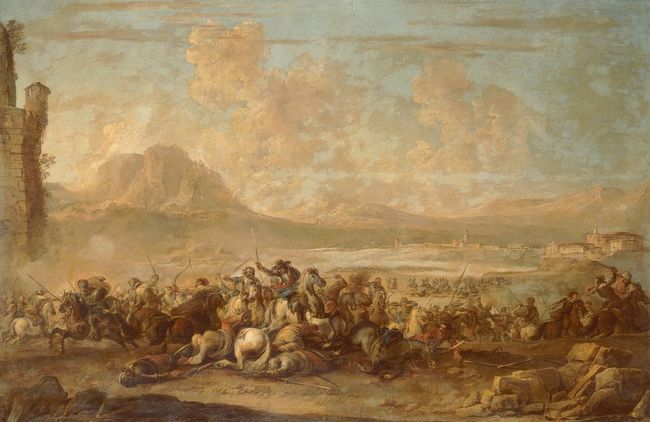What do pictures speak about?
Khanenko Museum updates European painting exposition
Visitors of the National Bohdan and Varvara Khanenko Museum have now an opportunity to relish the paintings and sculptures to which only specialists have had access until now.
After the long years of research and restoration, the museum rooms are going to display ten pictures by old European masters and one 15th-century polychromatic wooden sculpture.
Most of these works have not been exhibited before because they were “chronically sick” for years or were under the centuries-old layers of a darkened old varnish. Only thanks to the efforts of National Restoration Center specialists were the unique artworks given a new lease on life. Some other canvases were undeservedly deprived of attention because they were allegedly made by unknown artists and only recently received the right appreciation.
Among the 16th-18th-century paintings, now occupying central places in the exposition rooms, are pictures of various genres and schools: an exquisite Italian pastoral (Giuseppe Zais – 1709-81), a classical architectural view (Antonio Joli – 1700-77), a placid Dutch landscape (Cornelis Decker – circa 1620-78), and a dynamic battle scene, where Oriental horse riders confront European cavalrymen (Francesco Simonini – 1686-circa 1755).
Each of the new pictures is most likely to find its admirer, but the floral still life by the Flemish painter Gaspar Pieter Verbruggen II (1664-1730) will leave nobody indifferent. It was believed until recently that the author of this picture was the artist’s father and mentor. However, the low-key, usually small in size, pictures by Verbruggen the Elder considerably differ from the gorgeous canvases of Verbruggen the Younger who could be called the Mozart of a floral still life.
The unremarkable, at first glance, landscape Hunters at the Forest Edge by Roelant Roghman (1627-circa 1692), a friend and follower of the great Rembrandt, becomes, at a closer examination, mysterious and full of hidden meanings. The authorship of this rare master was also confirmed very recently. Like Rembrandt’s paintings, the picture by Roghman fully exposes itself to the spectator when he or she peers into semitransparent shades and carefully studies what seem to be secondary details.
Another sensation of the new exposition is the 16th-century Panagia Odigitria icon. It is probably the miracle-working Armenian Holy Virgin which the faithful of three denominations have been worshipping for centuries. In the 1920s, this well-known icon was stolen from the ruined St. Nicholas temple in Kamianets-Podilsky. Legend has it that the icon was considered the city’s protector and more than once saved it from invaders. The exposition presents not only this unique monument itself, but also the related research materials.
Another unique monument, being displayed for the first time in the Dutch art room, also dates back to the 16th century. The museum’s associates found an old cracked-in-two wooden board with a picture of Christ the Savior in 1986 at Kyiv’s Exaltation of the Cross Church. The image of Christ had been badly disfigured by some unknown vandals. As a result of a sophisticated restoration and painstaking research, the saved artwork has become one of the museum’s most valuable acquisitions in the past few years. It turned out that the picture of Christ the Savior had been made at the studio of Quentin Massys (1466-1530), a famous late-15th - early-16th-century Flemish artist whose oeuvres are the pride of the Louvre, the National Gallery in London, and the Royal Museum of Fine Arts in Antwerp.






